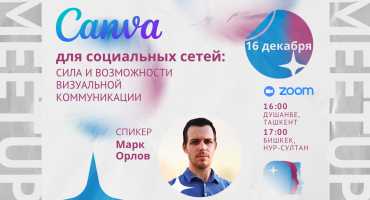Publication in SCOPUS journal has become one of the priorities for universities, research institutions and thus researchers in a large number of countries.
I suggest to look critically at this requirement since SCOPUS is not a guarantee of quality but rather a bureaucratic attempt to standardise science and science evaluation criteria. But researchers need to take into account that SCOPUS-indexed journals are important for their career and to reach large audiences.
To be able to publish in a SCOPUS journal, the first step is to identify one or more journals that may be interested in your work. In addition, to minimise rejection risks, it is useful to work to adapt the journal’s requirements and scope in terms of focus, empirical/theoretical contribution, disciplinary approach.
What is SCOPUS
SCOPUS is an academic journal database that is currently used as evidence of the fact that the journal publishes high quality scientific article. By force of this, having an article published in a journal that is indexed in SCOPUS is taken as evidence that a given researcher (or team) has produced a high-quality work.
To be admitted into the SCOPUS database a journal needs to apply and satisfy a number of quantitative criteria (regular publication of its issues, attracting citations) and qualitative ones (experts read the articles of that journal and guarantee on their quality).
That said, SCOPUS is a database into which some journals are admitted every year and other journals are excluded because of a number of reasons. This means that you can find low quality articles published in SCOPUS journals as well as high quality articles published in non-SCOPUS journals. For one thing, ACME, the world leading journal in radical geography is not in SCOPUS by choice being, by its scope, a radical journal.
What is an Impact Factor
Impact Factor is a number calculated Y1(C/D) + Y2(C/D) and divided by 2 where
Y1 is year 1, C is the number of citations that the journal received, D is the number of citable documents that the journal has published.
It is called impact factor because, the higher it is, the more the articles published in that journal have been cited (and allegedly read) by other scientists. It can thus be assumed that that very journal (or article) have an impact on science (and the scientific community).
What is a Quartile
Any given population can be divided into 4 sub-groups, each of whose includes 25% of the whole population. They are called quartiles.
If we take the number of journals in a given discipline, say they are 500, each quartile will host 125 journals ranked by impact factor. Therefore, the first 25% (125 journals) will belong to Q1 and be considered the top journals of the world, the second 25% (125 journals) will belong to Q2 and be considered within the “second best” (50% top journals) of the world. Q3 will include also 125 journals considered within the 75% best journals of the world and Q4 will include the bulk “best journals”.
Some countries discriminate between articles published in Q1 journals and articles published in Q2 or Q3 journals. This means that scientists might have higher chances of promotion or accessing funds if they publish in Q1 journals. Other countries consider it already good if a scientist publishes in a SCOPUS journal, regardless of the quartile.
Why don’t we just go for the highest impact journal?
If your line manager requires to publish in the no1 journal in your discipline you have little choice. But if you have some margin in the choice of the journal you want to target, there are several reasons why the choice might not go to a top journal (or a Q1 journal).
I consider the choice of a journal depends on your position with regards to four variables: visibility, cost, prestige, accessibility.
1) Visibility: the more prestigious the journal, the more you can claim prestige for yourself and your work. But this does not necessarily means that you will reach your target audience. For instance, if you want Central Asian experts to read your piece, you might prefer a regional journal, which means 100% of your readership will be Central Asian scholars. Publishing in a top disciplinary journal will look good on your CV, but many potential readers might miss your article.
For instance, I have published two articles on a similar topic in two different journals. One is a Central Asian one but with a relatively low impact factor. The other is one of the world leading journals in politics. The article on the regional journal has received many more views, citations and attention than the one published in a top politics journal (which has been virtually ignored by many Central Asian scholars, in spite of being in a “good” journal).
2) the “cost” of approaching a more prestigious journal is also higher in that they might have a higher rejection rate (and even boast about it), more demanding reviewers or a longer review process or they might not be interested in your article if it’s too empirical (desk rejection).
3) Prestige: in general, the more a journal is prestigious, the more people will submit, making perhaps the process more difficult, long or both. So you will gain a lot for your CV if you get published but that will take much more time and efforts.
4) the “accessibility” means how many people will be able to read your article once it is published. If the journal is open access, accessibility is high. If the article is only accessible for a price, or the journal is included in some exclusive (and expensive) databases then accessibility is lower. Embargo time also affects accessibility. After how long will you be able to share the article freely through your networks?
Tricks and deception
Keep in mind that cracking the SCOPUS algorithm is not that complicated. There are many ways to artificially increase the number of citations your journal receives (and thus the IF and possibly its QX). Self-citation is one, cross-citations between two or more journals is another. They are not really ligit but tolerated to some extent.
There are also ways to deceive SCOPUS “entrance procedure” and get a low quality journal into the SCOPUS database.
This is what some conferences now offer: if you pay your conference fee, your paper will be published in a SCOPUS journal. This has a risk and a cost. The risk is that someone will find out that the journal is not licitly in SCOPUS. The cost is that reputation of journals is well known within the scientific community. So you can claim with your line manager that you have a SCOPUS article, but most people will know that you published in a low quality journal and this will affect your career.
How to build a publication strategy
A publication strategy is personal and depends on your career goals. But there are some common elements that you might want to take into account when choosing a journal (or several journals)
Your professional reputation does not directly depends on getting published in top journals. This is but one of the signs that you might produce quality research but, by far, not the only one.
Think of someone who, targeting only top journals, gets an article out every 2-3 years and nothing in between. When they apply for a fellowship or a grant the committee might then have doubts about the capacity of the researcher to produce outputs thanks to the grant. Think of someone who is well known in the field because mobbed their PhD students or abused colleagues. High impact journals will not save their reputation.
So you might want to publish, once in a while, in a top journal to show that you know what “high quality means”. But there’s no need to obsessed by Impact Factor or reputation of a journal. “Minor” journals also publish good articles.
You might also want to minimise rejection risks or you’ll spend too much time on the same article. Sometimes your article will get more visibility in a minor journal that is interested in your work and that is read by people in your field. Besides, “less famous” journals sometimes provide more guidance to younger authors. Being less busy, they take the time to explain to the author what they need to improve and follow them through the process.
Sometimes rejection is just the result of a bad choice. If you did not spend time reading the journal’s scope and you submitted because “it looked like a good journal”, chances are that you’ll get rejected.
There are journals that prefer empirical articles, journals that deal with theoretical debates, journals that are more interested in a given region or discipline. If the focus of your article does not match the scope of the journal, it will be more difficult to convince the reviewers (and/or the editors) that your article fits there. Subsequently, rejection will be more likely.
Getting published with the minimal amount of pain also depends on your capacity to align with the journal scope and given the impression that your article gives continuity to the interests of the journal. This is done, inter alia, in many ways such as being friendly and open to the editor, gentle but firm with the reviewers if you disagree on something and, overall, by respecting the people you are working with and going the extra mile to make them spend the least possible amount of time on your piece.
Read more: The SCOPUS Diaries and the (il)logics of Academic Survival
If you have found a spelling error, please, notify us by selecting that text and pressing Ctrl+Enter.






